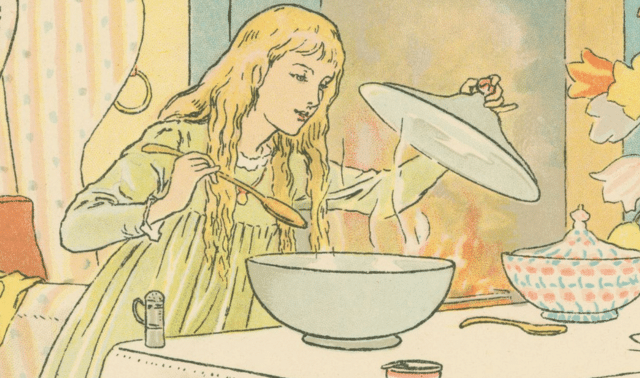Sign up for the Family Tree Newsletter! Plus, you’ll receive our 10 Essential Genealogy Research Forms PDF as a special thank you.
Get Your Free Genealogy Forms
"*" indicates required fields

Written by Diane Haddad, unless otherwise noted.
Once you’ve been doing genealogy research for a while, and you have a family tree or a computer hard drive or a filing cabinet with a bunch of notes and old records, you might wonder what to do with it all. Or perhaps you’ve always harbored the dream of sharing your family history, and you’re not sure how.
It’s a hard truth: Few people have much use for an unstructured assortment of documents and computer files. Even folks who are curious about their family history—and that describes most I’ve met—aren’t likely to sort through your research and rebuild the store of knowledge you’ve amassed over years.
If your family research is to live beyond you, you’ll need to do the work of putting it into some shareable, lasting form. That usually means summarizing your finds in writing, maybe enhanced with photos and images of interesting documents. Whether you go all-out with a self-published hardback or just pass out stapled pages at the next family reunion, you’ll create a legacy—a framework others can use to understand your family’s story and the genealogical evidence you’ve gathered.
We can’t promise the project will be a breeze, but we can promise it’ll be easier when you follow these tips and use our handy organizing worksheet.
1. Know Your Purpose
Before you begin, it’s important to know what you hope to accomplish with this writing project. Do you want to summarize all your research, share your family legacy, pass down the stories Grandpa told, tell how your family fits into local history, share the story of an ancestor or family you admire, celebrate your ethnic heritage, or something else?
A strong focus makes the project more manageable, says Sunny Jane Morton, author of Story of My Life. “A small, finished project is better than a three-volume tome that exists only in your dreams.”
Need help narrowing the scope? Morton advises looking at your research for the most compelling story or interesting person. Author Sophia Wilson, who penned an 160,000-word history of her family, started her project by writing as many family stories as she could think of, then turning them into short biographies of the people involved. She wrote every day for at least 15 minutes, but sometimes for hours at a time. Taken together, those biographies served as the starting point for her project.
Alternately, you could choose a topic that commemorates an upcoming family milestone, such as your parents’ 40th wedding anniversary. Or you might start with whatever is most doable.
Your audience is an important aspect of your goal. For a project just family will see, you might use a casual writing style, refer to relatives with familiar titles (“Great-grandpa Thornton”), and use in-text source information. If other genealogists will read your work in a newsletter, journal or published book, you’ll want a more authoritative style with an emphasis on your research process, and formal source citations in footnotes and source lists.
Think about your audience’s age (or level of maturity), too. Wilson recalls how her research turned up stories that might not be appropriate to a younger audience. “Instead of shifting the focus of my book, I decided that children could simply read the unvarnished truth once they were mature enough,” Wilson says. “Age-appropriate stories could be extracted and adapted for a younger audience, for whom I would also write at a lower reading level.”
“I kept coming back to what I wanted the project to accomplish (preserving and sharing memories for the younger generation) and letting that guide my decisions,” she says.
2. Make a Plan
An outline gives you a framework for building your project, especially if it involves multiple people or a long time span. Make a list of elements you want to include. Don’t worry about organizing the list yet.
Here’s an example for my maternal family history opus:
- a family tree of Mom’s family
- information about the places the family came from with a map, including why so many immigrated from each place
- names and immigration details of all the immigrant ancestors: Henry Seeger, Eduard Thoss, Mary Mairose, Thomas Frost, Edward Norris, Elizabeth Butler, Henry Hoernemann, Anna Maria Weyer, and so on.
- where these families settled in the United States, their jobs and their children
- Eduard Thoss tavern in Northern Kentucky
- info on Cincinnati Over-the-Rhine neighborhood, where so many settled
- Dierkes boys in family cemetery plot
- Henry Seeger’s cigar store, with photos and timeline, and two babies who died as infants
- Thomas Frost/Mary Wolking divorce
- Ade Thoss and the Covington Blue Sox
- possible family connection to Windthorst, Kan.
- death of Elizabeth Teipel Thoss and several of her children
- Benjamin Teipel trap-shooting invention and death
- Civil War service of Frank and Benjamin Thoss
- firefighter Raymond Norris and Newton Tea & Spice Co. Fire
- how Grandma and Grandpa met
Your list might cause you to rethink your project scope. For example, I’m seeing that I could divide up my project by family branches, breaking it down into smaller parts (and this is only part of my list).
When you know the topics you want to cover, arrange them in an order that makes sense to you. You could do chronological order, geographical order (group all information related to Germany, all immigration information, all second generation information), family branches one at a time, or some other arrangement. You could opt for a general overview then add several shorter profiles of specific ancestors or families.
Wilson shares how she thought about structure while planning her project:
One option would be maintaining individual biographies, organized in the book by birth year, generation or location. Or I could combine all biographies into a single narrative chronology, or even organize the stories by theme (women, farming, culture, etc.). I opted for the most straightforward and comprehensive order: chronological. With this approach, I gained a deeper understanding of how my ancestors’ lives developed over time, and how one event flowed into another.
Next, create an outline by organizing topics into sections or chapters. Read published family histories for examples. One of my favorites is Family by Ian Frazier.
3. Say It with Pictures
Pictures and graphs will engage your readers, help them follow complicated lineages and show what you’re talking about. “Plan as you go which pictures, documents, maps, charts and genealogical reports will best illustrate your narrative,” Morton advises.
Depending how many photos and documents you’ve found, you’ll want to winnow the options to those from key moments in your family history, selecting those that will reproduce well in the finished product. Consider adding transcriptions for hard-to-read or foreign-language documents.
Keep copyright in mind. If you plan to publish your work (including on a website), get permission from the copyright holder or owner of any images you didn’t create or that aren’t in your personal collection. For a quick read about understanding copyright laws, check out this article.
4. Get Organized and Utilize Apps
Now you’re ready to write. As you work, go over your records for families and people you’re writing about. Wilson developed a filing system that automatically sorted documents by individual. “I created a separate document for every event so I could easily insert new findings, titling each with the event, the date and the location,” she says. “I then grouped the documents into folders, one folder for each year.”
To help you organize source references, add in-text references with the title, author and page or record number in parentheses when you use information from a record, article, book or website. Also create a bibliography of sources as you go. This should include everything needed to find that source again: title, author, publisher or creator (such as the National Archives), publication date and place, website, etc.
Later, when your project is mostly complete, you can keep the in-text references, or number the references and create footnotes (short-form citations at the bottom of the page) or end notes (short-form citations at the end of a chapter). Include the bibliography at the end of your work. For help with source citations, use the book Evidence Explained by Elizabeth Shown Mills (Genealogical Publishing Co.).
You might have a writing head start if you can pull together blog posts or short essays you’ve already written about your family history. Your genealogy software or online tree might offer a timeline you can follow, or even generate a narrative report for you. For an ambitious project or if you do a lot of writing, you might invest in software such as Scrivener. Additionally, writing apps can help you create an outline, organize and edit your story.
5. Generate Ideas through Prompts and Research
If you’re still having trouble knowing what to write, try answering the family history writing prompts in a book such as Stories From My Grandparent or from Family Tree Magazine. These will help you flesh out ideas and take your family stories in new directions.
Revisit your research for story ideas, and let what you find in documents inspire you. Wilson consulted books (both digital and physical) about her ancestors’ location and ethnic group, as well as documents on genealogy websites like Ancestry.com and Newspapers.com. One book on Ancestry.com contained all the church records for her ancestors, some written by her great-great-great-grandfather’s best friend.
Wilson also revisited local histories and newspapers she had found early in her project. “Now that I was further in my research, I recognized more names and better understood the relationships among them,” she says. “People I had dismissed as ‘townsfolk’ turned out to be in-laws and close friends of my lineal ancestors.”
Digital Editor Melina Papadopolous writes that “research” can come across as a scary or overly academic term. But “you’re simply learning more about your ancestor and their life and times,” she says. “Study not just the facts of your target ancestor’s life, but also the stories. What clues can you find about their personality, relationships and community? Why did they make the decisions they did, and how did they fit into the era’s wider economic and cultural context?”
Papadopoulos adds that these resources are especially helpful for inspiration and details:
Old photos
They say a picture is worth a thousand words. Can a picture also inspire a thousand words? Get out your family’s photo albums and thumb through them.
Take some time to reminisce—you never know what memories will gather even after just five or 10 minutes. They may remind you of a specific memory (a fishing trip with Grandpa Bill), a relative’s personality (the goofy way your aunt dressed), or a time period in your life (a photo of the living room in your childhood home). Keep an eye out for photos you’d like to use in your manuscript, too.
Journaling
Many writers swear by journals, which allow you to jot down thoughts and ideas as soon as they occur. That way, you don’t have to spend an evening scouring your memory for the perfect idea you had at lunchtime.
In a journal, you can also free-write. In that exercise, you write whatever you’re thinking or feeling, without worrying about spelling, grammar or structure. You’d be surprised what can spring out of even short free-writing sessions.
Other writing
This writing advice is something of a cliché, but it’s repeated so often for a reason. Reading widely exposes you to many different styles and points of view.
Devour every book and article you can get your hands on. Books and essays similar to what you’d like to write may directly inspire your work. But just about anything can generate ideas—a how-to article on baking scrumptious desserts, a series of essays about wild birds, or the latest report on the stock market.
Family members
Writing doesn’t have to be a solitary endeavor. You can learn a lot about yourself and your family through conversations with family members who knew your subject or have heard stories of their own: parents, grandparents, cousins, aunts, uncles and even distant relatives.
Before any interview, prepare relevant questions that will help you tell the story. For example, when asking Great-grandma Helen about life on her family farm, list some questions about her day-to-day life, caring for animals, what the farm house looked like, and what she did for fun.
Think like a reporter, investigating the “Six Ws”: who, what, where, when, why and how. Especially when interviewing first-hand witnesses to an event, focus on the why and how of ancestral stories. You can hopefully shore up the who, what, where and when questions later.
Trusted genealogy websites
Relatives can fill gaps in memories and share vivid details. But genealogy records (when available) can add important historical context and concrete facts that shape a story.
Tried-and-true genealogy websites include:
- FamilySearch: This offering from the Church of Jesus Christ of Latter-day Saints has countless collections, which are free to search or browse. Drill down by place or record type. A research plan will help you avoid feeling overwhelmed on the sprawling site.
- Chronicling America: This extensive newspaper database reminds us that our ancestors were real people who lived dynamic lives, beyond the details printed in records. Find information about their lives and communities in the millions of digitized pages here, ranging from the 1700s to 1963. Search both ancestral names and places.
- Fold3: A subscription database, Fold3 has more than 670 million searchable records. Most of them are military records: muster rolls, war diaries, draft registration cards, and more. If you have an ancestor who fought in or lived through a war involving the United States, this is the resource for you. A seven-day free trial gives you temporary access to the site, so devote that week to searching records, taking notes and downloading important documents.
- State government websites: Most US genealogy records were kept at the state and local levels, and today are administered by state archives, libraries and vital records offices. Learn about what records were kept in your state(s) of interest and how you can—or can’t—access them today. Most states have privacy restrictions limiting access to more-recent birth, marriage and death certificates, for example.
Libraries
Libraries offer so much more than books and computers. Many have genealogy or family history departments, where they share useful resources and can direct you to materials like city directories, newspapers and photos of local people and places. They may also offer patrons free access to subscription genealogy websites like Ancestry.com and Fold3.
6. Seek Out Help
Look for writers’ groups and classes in your community. From online groups to friends and family members, having a community you can rely on for feedback and encouragement is essential.
Reaching out can also lead to new research finds, important for sourcing the details in your stories. Wilson connected with other family historians, as well as genealogical societies and libraries (who scanned entire chapters of reference books for her to consult). One cousin-in-law even sent her photos and a relevant family keepsake they found on eBay.
7. Begin in the Middle
Don’t let the “how to start” roadblock stall your project right out of the gate. If you don’t know how to begin, just start writing a story you like—maybe it’s about an ancestor’s immigration, military service or venture to the wrong side of the law. The words will flow from there.
“My goal wasn’t perfection, just to get memories on the page,” Wilson says about her first step of writing family biographies. “I didn’t waste time checking spelling and grammar—that would come later.” An interesting or dramatic event is often the best way to begin a story, anyway. Remember, you’re not carving in stone: You can always rearrange things later.
8. Write Naturally
If you’re writing for relatives, pretend you’re telling your family story to a friend. If you’re writing for a publication, tailor your work to that publication’s style.
Wilson had to wrestle with how to balance facts she found in her research with storytelling. “I thought of how much I hated history class growing up—all those names-places-dates to memorize, and no story to latch onto,” Wilson says. “I resolved to … strive for historical accuracy without resorting to the dry tone of a textbook.”
Papadopoulos shares the following tips for writing and editing:
Develop themes
You might already know you want to write about your second-great-uncle, who was a WWI veteran. But what do you want readers to take away from your narrative?
Deciding on one or more themes will allow you to bring out a subject’s humanity and zero in on key details that describe him. Possible themes for such a story about a WWI ancestor include:
- Patriotism
- Friendship
- Homesickness
- Belonging
Make a timeline
Chart your story from start to finish chronologically. The structure may change as you write, but a timeline will help you understand the scope of the story. For example, perhaps your uncle:
- Loses his job at the paper mill
- Is drafted into World War I
- Meets his fellow soldier Tom “Flash” Smith, who becomes his best friend
- Serves for two years in Germany
- Returns home to Illinois
- Meets and marries his wife, Phyllis
- Becomes a father
- Starts a publishing company
Start writing—and don’t stop!
After all that work, it’s time to sit down and write! Open your favorite word-processor, grab a preferred pen, or even drag out an old trusted typewriter—whatever medium you think will help you do your best work.
Try to hush your inner critic as you write. Your goal for now is just to get words on paper. Polishing comes later—you’ll notice that we don’t get to that until chapter four, about editing and proofreading.
The preparation you’ve done so far will hopefully make the writing process as smooth as can be.
Read it aloud
Only once you’ve put some words on paper should you start revising. Every writer has a different relationship with this stage—some dread it, while others love seeing their work in a new light.
Reading something out loud is quite different from reading it silently in your head. Some words are simply meant to be spoken (think: reading the text of a Shakespeare play versus seeing it acted out on stage). You’ll notice different nuances and cadences when speaking text, making the story richer.
Reading aloud also exposes mistakes, and suggests places where you can revise. You might want to shorten a sentence that leaves you out of breath, for example. Or maybe you pick up on a repeated word or spelling error that had escaped your notice when just reading to yourself.
Find a “beta reader”
After working with the same set of words for so long, we tend to get used to them. Then we miss glaring issues that others might easily pick up on.
Consider asking someone you trust—and whose opinion you value—to read your work. Encourage them to focus on things beyond grammar, spelling and basic sentence structure.
You might even give them a list of questions to ask themselves as they read, such as:
- How does Uncle Joe come across? Gruff, but affectionate?
- Does the war scene feel rushed?
- What details in a scene or place description were especially helpful, and what else might I include?
- Was my prose inviting and easy to read, or was it too dry or academic?
By asking specific questions, you can get specific (and hopefully constructive) feedback.
Don’t rely on spell-check
Spell-check can be an excellent tool for spotting blatant misspellings and silly grammar mistakes. But don’t trust that wiggly red line for everything. It’s especially guilty of flagging names it doesn’t recognize, and won’t necessarily catch instances where you spelled correctly but used the wrong word.
9. Take Your Time
A deadline can motivate you, but give yourself plenty of time. You want this project to add fulfillment to your family research, not cause stress. Start now and work on your writing project a little at a time, once a week or every evening if you can manage it. Imagine where you’ll be a year from now.
Related Reads
A version of this article appeared in the December 2018 issue of Family Tree Magazine, written by Diane Haddad. Sophia Wilson’s article on the steps she took to write her family history narrative appeared in the March/April 2022 issue. Melina Papadopoulos wrote an article on beginning writing projects in the November/December 2024 issue.
FamilyTreeMagazine.com is a participant in the Amazon Services LLC Associates Program, an affiliate advertising program designed to provide a means for site to earn advertising fees by advertising and linking to affiliated websites.









